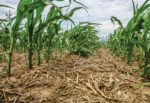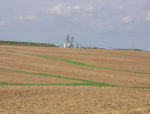Advertise Follow Us
Articles by John Dobberstein
An NRCS survey finds no-till acreage increased in the state by 29% overall between 2004 and 2013, but decreased where crop rotations shifted from small grains to corn and soybean plantings.
Read More
No-Till Movement In U.S. Continues To Grow
The most recent Census of Agriculture found no-tilled acres in the U.S. reached a new high of 96 million acres in 2012, but experts say obstacles remain to more consistent adoption of the practice.
Read More
What I've Learned from No-Tilling
Reaching A Generation Without Tillage
While Iowa No-Tiller John Schnekloth Can Remember Wading Through Every Form of Tillage Over the Years, His 27-year-old Son, Hans, Struggles to Even Name Tillage Implements.
Read More
Farmer Unveils New Invention For The Seed Firmer Market
With an embedded stainless-steel fertilizer tube and replaceable wear plate, the Flo-Rite seed firmer promises better down pressure and less cost per row unit, says inventor Jeff Peter.
Read More
Farmer Unveils New Invention For The Seed Firmer Market
With an embedded stainless-steel fertilizer tube and replaceable wear plate, the Flo-Rite seed firmer promises better down pressure and less cost per row unit, says inventor Jeff Peter.
Read More
Keep Rootworms Guessing To Protect No-Till Corn Profits
As concern rises about rootworm resistance to Bt corn, no-tillers should employ a diverse control strategy that includes pyramided traits, crop rotation, refuge planting and adult control.
Read More









